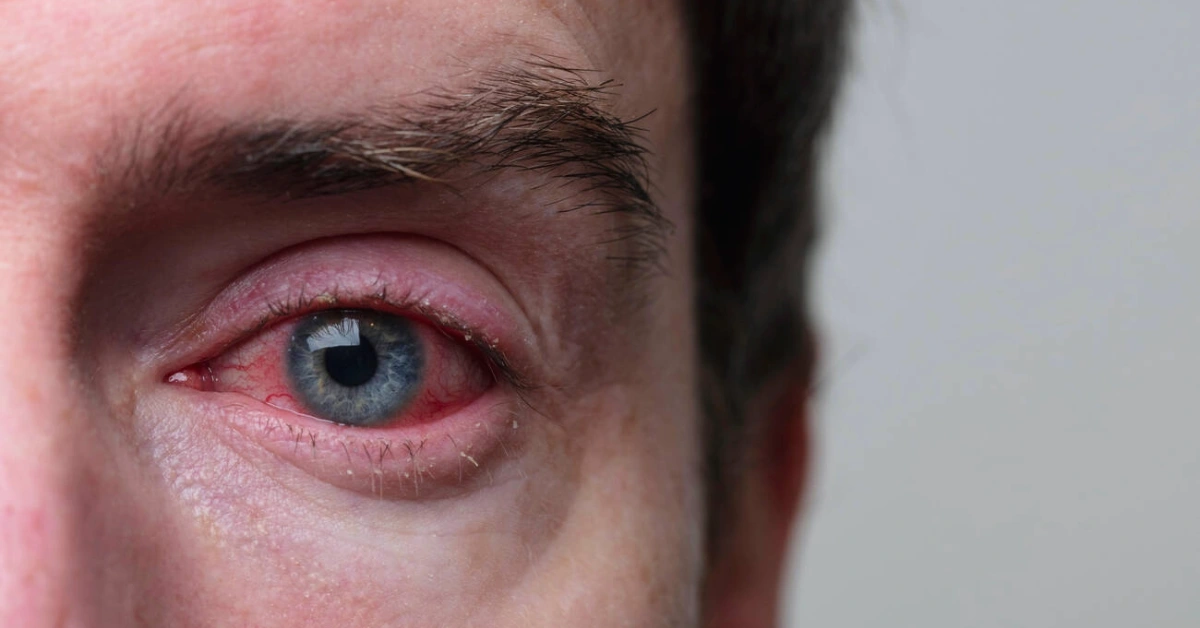Pink eye, commonly known as conjunctivitis, is a prevalent eye condition that affects millions of people worldwide. While pink eye is a well-known term, it is often misdiagnosed due to its similarities with other eye conditions. In this article, we will delve into what pink eye is, its symptoms, contagiousness, and the conditions commonly mistaken for pink eye.
Key Takeaways
- Pink eye is an inflammation of the eye’s clear covering and can be caused by viruses, bacteria, allergens, or irritants.
- Viral and bacterial pink eye are highly contagious and can spread through contact with infected individuals or contaminated objects.
- Conditions like dry eye syndrome, blepharitis, and corneal abrasions are frequently misdiagnosed as pink eye.
What Is Pink Eye?
Pink eye, or conjunctivitis, is an inflammation of the thin, clear covering (conjunctiva) of the white part of the eye and the inside of the eyelids. There are three main types of pink eye: viral, bacterial, and allergic conjunctivitis. Viral conjunctivitis is caused by viruses, while bacterial conjunctivitis is caused by bacteria. Allergic conjunctivitis occurs due to allergens like pollen, pet dander, or cosmetics.
Also Read: What Is The Rice Hack For Weight Loss? How Effective Is This Method?
Symptoms Of Pink Eye
Common symptoms of pink eye include:
- Redness in the white of the eye
- Itching or burning sensation
- Watery or thick discharge from the eye
- Swollen eyelids
- Sensitivity to light
Symptoms may vary depending on the type of pink eye. For example, viral conjunctivitis often causes watery discharge, while bacterial conjunctivitis usually results in thick, yellow-green discharge.
Is Pink Eye Contagious?
Viral and bacterial pink eye are highly contagious and can spread easily through contact with infected individuals or contaminated objects. To prevent the spread of pink eye, wash your hands frequently, avoid touching your eyes, and don’t share personal items like towels or makeup. If you have pink eye, stay home from work or school until symptoms improve to avoid infecting others.
What is commonly misdiagnosed as pink eye?
Several eye conditions are commonly mistaken for pink eye, leading to improper treatment and prolonged discomfort. These conditions include:
- Dry Eye Syndrome: Occurs when the eyes don’t produce enough tears, causing redness, itching, and a gritty feeling.
- Blepharitis: An inflammation of the eyelids that causes redness, itching, and flaky skin around the eyes.
- Corneal Abrasions: Scratches on the eye’s surface that cause redness, pain, and light sensitivity.
Misdiagnosing these conditions as pink eye can result in ineffective treatment and delayed recovery.
When to see a doctor?
If your pink eye symptoms worsen or don’t improve after a few days, it’s essential to consult a healthcare professional. Seek medical attention if you experience:
- Severe pain or swelling in the eye
- Vision changes or light sensitivity
- A weakened immune system
- Symptoms that persist for more than a week
An accurate diagnosis is crucial for receiving appropriate treatment and preventing complications.
Conclusion
Pink eye is a common eye condition that can be caused by viruses, bacteria, allergens, or irritants. While its symptoms are well-known, pink eye is often misdiagnosed as other eye conditions like dry eye syndrome, blepharitis, or corneal abrasions. To ensure proper treatment and recovery, it’s essential to be aware of the differences between pink eye and other eye conditions. If symptoms persist or worsen, consult a healthcare professional for an accurate diagnosis and appropriate treatment.
Read More: How To Starve Bad Gut Bacteria? Take Control of Your Gut!
FAQs
A: Mild cases of viral pink eye may resolve on their own, but bacterial pink eye usually requires antibiotic eye drops prescribed by a doctor.
A: Pink eye typically lasts 1-2 weeks, depending on the type and severity of the infection.
A: No, it’s best to avoid wearing contact lenses until the infection has cleared to prevent further irritation and spread of the infection.
A: Yes, pink eye is more common in children due to their close contact with others and less frequent hand washing.
Citations:
- “Conjunctivitis (Pink Eye).” Centers for Disease Control and Prevention, 30 Jan. 2020, www.cdc.gov/conjunctivitis/index.html
- “Conjunctivitis: What Is Pink Eye?” American Academy of Ophthalmology, 10 Sept. 2021, www.aao.org/eye-health/diseases/pink-eye-conjunctivitis

